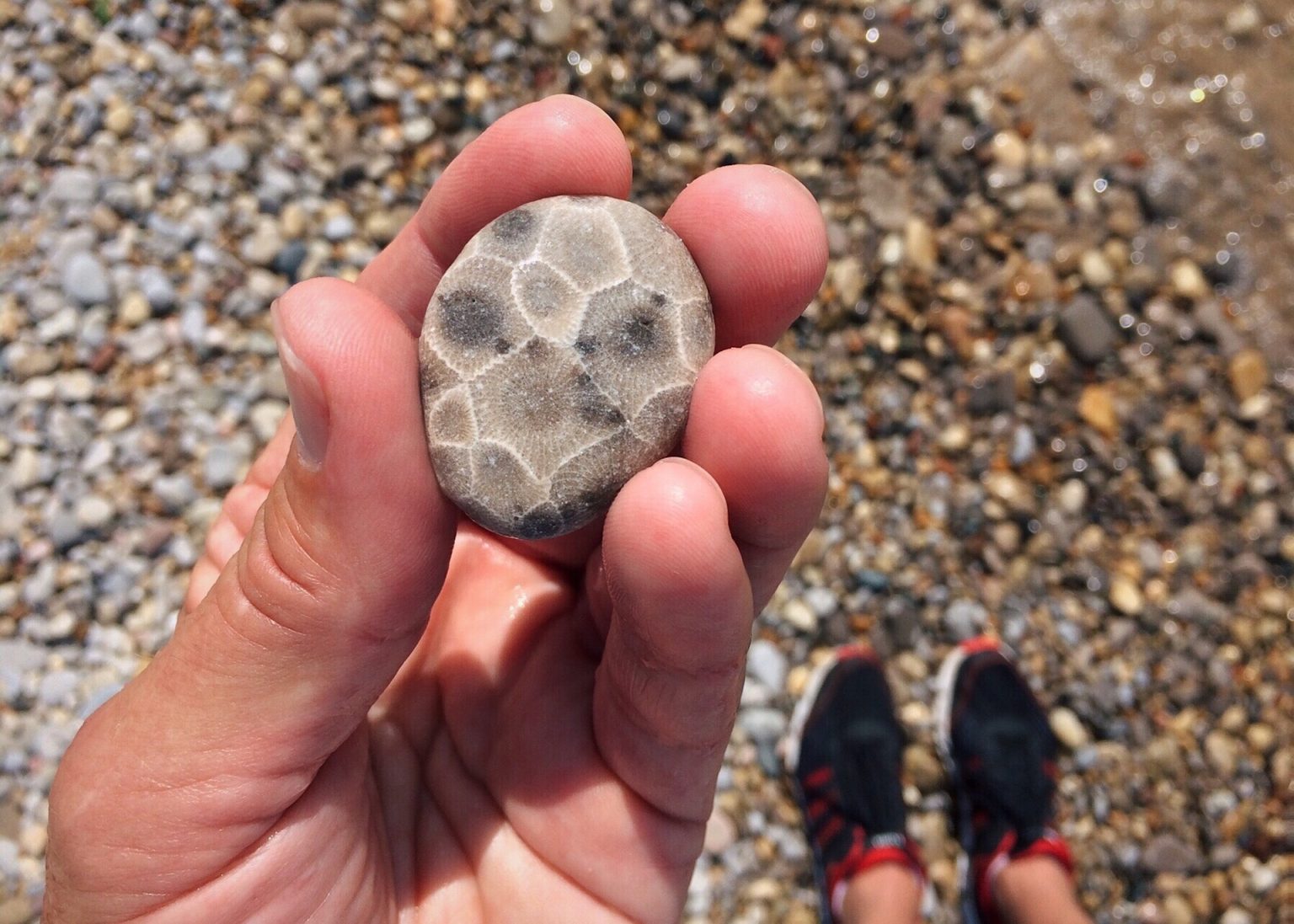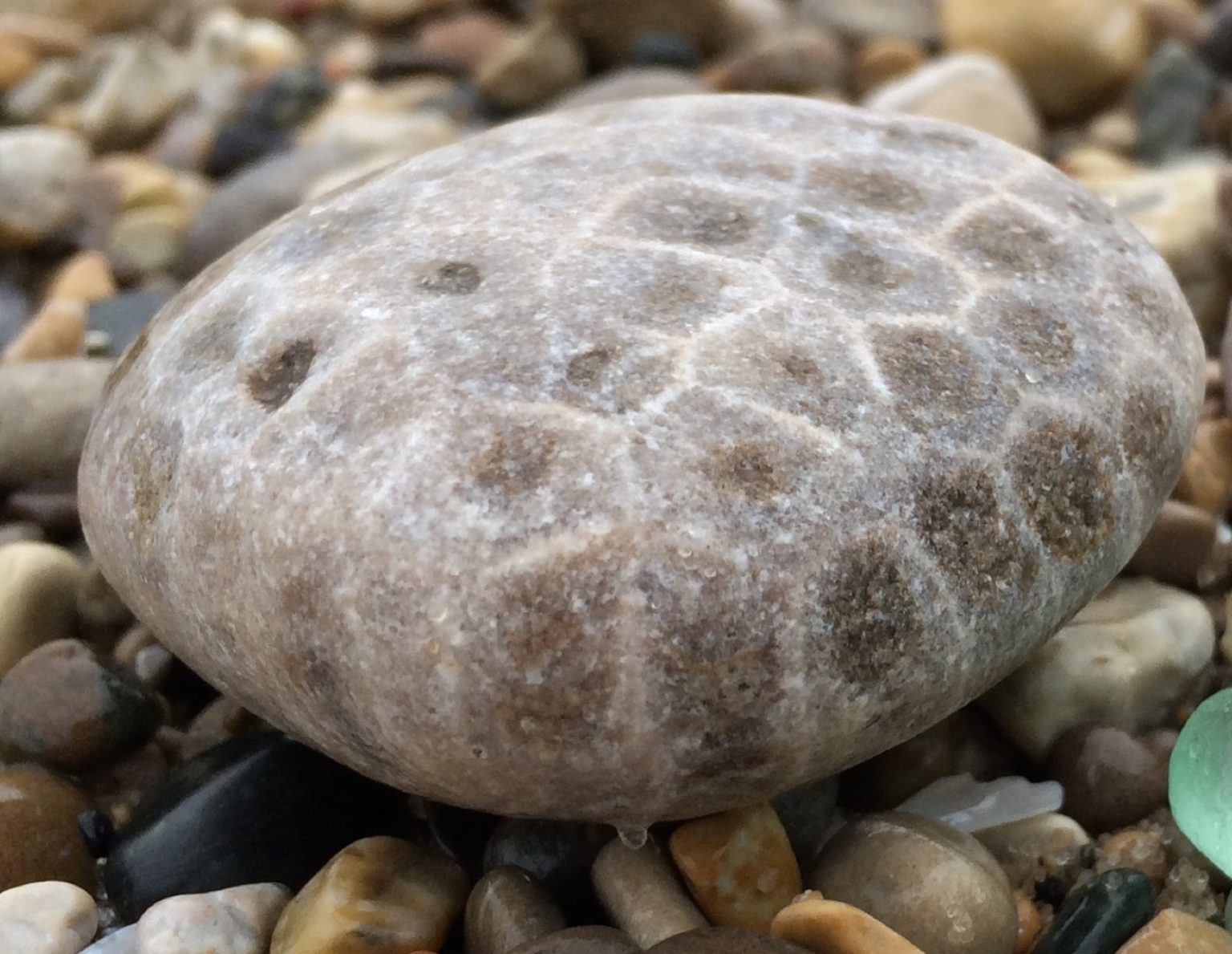It is a fossil colonial coral that lived in the warm Michigan seas during the Devonian time around 350 million years ago. The name Hexagonaria (meaning six sides) percarinata was designated by Dr. Edwin Stumm in 1969 because of his extensive knowledge of fossils. This type of fossil is found only in the rock strata called the Gravel Point Formation. This formation is part of the Traverse Group of the Devonian Age.
During the Devonian time, Michigan was quite different. Geo-graphically, what is now Michigan was near the equator, at a time when all of the continents were still together. A warm tropical sea covered the state. This warm, sunny sea was an ideal habitat for marine life.
A Devonian reef had sheltered clams, cephalopods, other corals, crinoids, trilobites, fish, and many other life forms. The soft living tissue of the “Hex” coral was called a polyp. At the center of this was the area where food was taken in, or the mouth. This dark spot, or eye, has been filled with mud or silt that petrified after falling into the openings. Surrounding the openings were tentacles that were used for gathering food and drawing it into the mouth which can be seen by the lines in the stone itself. The living coral that turned into the Petoskey stone thrived on plankton that lived in the warm sea. Calcite, silica and other minerals have replaced the first elements of each cell. Each separate chamber, then, on each Petoskey stone, was a member of a thriving colony of living corals. For that reason the Petoskey stone is called a colony coral.





